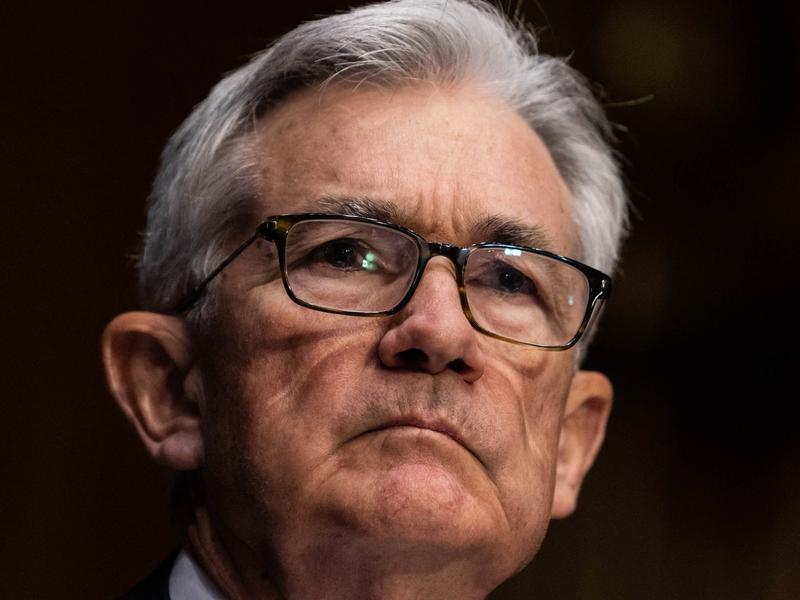 All Things Considered
All Things Considered
Game time: The Fed unveils a tougher plan to fight stubbornly high inflation

Faced with mounting pressure from rapidly rising consumer prices, the Federal Reserve is preparing to raise interest rates sooner — and perhaps more aggressively — than had been expected just a few months ago.
At the conclusion of a two-day meeting Wednesday, Fed Chairman Jerome Powell signaled that he and his colleagues are likely to begin raising rates in March.
The central bank is trying to prevent stubbornly high inflation from becoming a permanent feature of the economy. Prices in December were up 7% from a year earlier — the sharpest jump in nearly four decades.
"Inflation has persisted longer than we thought, and of course, we're prepared to use our tools to ensure that higher inflation does not become entrenched," Powell told reporters.
Policymakers previously said they would wait to raise rates until the economy had reached maximum employment. Powell suggested that threshold has been met, even though about 3.6 million fewer people are working now than were before the pandemic.
"There is a pool of people out there who could come back into the labor force," Powell acknowledged. "But it's not happening very quickly. And it may continue to not happen very quickly, as long as the pandemic is on."
In the meantime, the Fed chairman has argued the central bank cannot afford to leave inflation unchecked.
"To get the kind of very strong labor market we want with high participation, it's going to take a long expansion," Powell told lawmakers this month. "And to get a long expansion, we're going to need price stability."
Why inflation is on the rise
Prices during the pandemic have been far from stable.
Consumers have spent freely, thanks in part to generous government relief payments. But with workers and supplies often scarce, many businesses have struggled to keep pace with that demand. The resulting price hikes have proved to be much more persistent than the Fed initially expected, much like the pandemic itself.
The price of new cars, for example, has jumped 12% in the past year as automakers have struggled with a shortage of semiconductors. That's had a spillover effect in the used-car market, where prices have soared 37%.
The Commerce Department warned this week that it doesn't expect the semiconductor shortage to ease in the near future.
Gasoline and groceries have also gotten more expensive. Price-checkers point to elevated inflation in more than 2 out of every 3 categories the government tracks.
Powell acknowledged that's particularly hard on people with limited incomes, living paycheck to paycheck.
"They're spending most or all of what they're earning on food, rent, gasoline," Powell said. "Basic necessities. So inflation, right away, right away, forces people like that to make very difficult decisions."
Raising interest rates would not solve the supply chain woes but is intended to tamp down consumer demand.
The Fed is also pursuing other actions to fight inflation
In addition to raising interest rates, the Fed is expected to gradually begin shrinking its portfolio of government debt and mortgage-backed securities later this year. Doing so is another way to fight inflation, by pushing up long-term borrowing costs across the economy.
Mortgage rates have already risen to their highest level since the start of the pandemic, in anticipation of the central bank's moves.
Investors' concern about rising prices and the Fed's response have contributed to extreme volatility in the stock market this week.
The Fed expects inflation will cool this year, provided the public health outlook improves, easing shortages of both workers and supplies.
But Powell acknowledged that similar hopes have been dashed in the past.
"I don't think two years ago we thought we'd still be having record levels of cases," Powell told lawmakers at the height of the omicron wave. "Getting past the pandemic is the single most important thing we can do."
Fed policymakers predicted in December that inflation would fall to around 2.6% by the end of this year, less than half its current rate. (The Fed's preferred yardstick for inflation is the Commerce Department's index of personal consumption expenditures, which was 5.7% in November.)
The central bank says it's prepared to adjust interest rates more — or less — aggressively, if actual inflation turns out to be higher or lower than forecast.
"We're going to have to be just very attentive to what's happening in the economy and willing to adapt pretty nimbly our policy as we go through the year," Powell said earlier this month.
9(MDEwODYxNTQyMDEzNjAxODk2Nzc2NzNmYQ001))